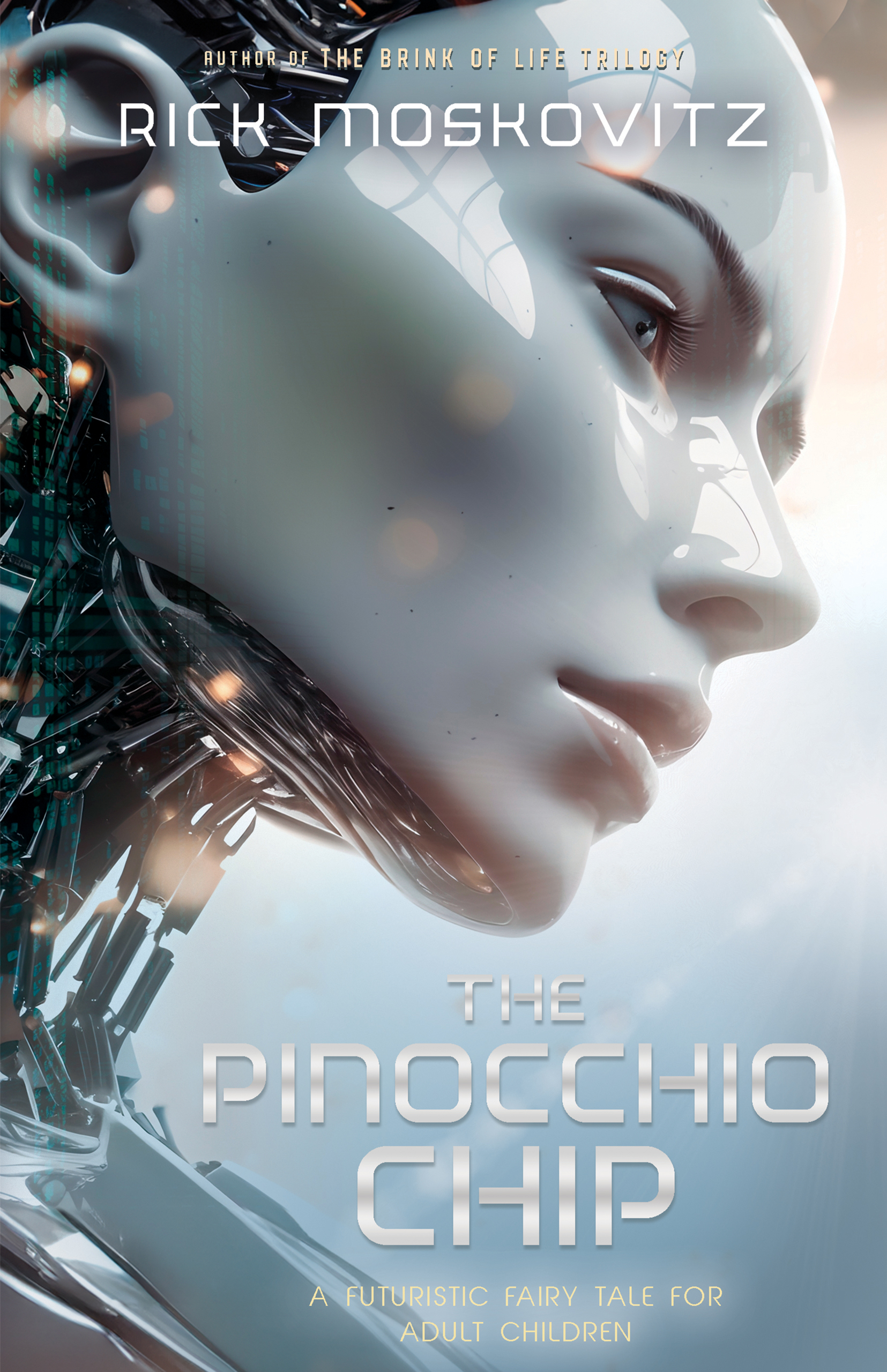
Part 4: Interview With Rick Moskovitz, Author of The Pinocchio Chip
The Pinocchio Chip is a first-person account of an AI’s quest for the Holy Grail of consciousness: human emotions. It delves deep into the essence of what it means to be alive, challenging the boundaries between AI and human identity.
Photina, an advanced AI becomes entwined in a groundbreaking experiment when her creator Eli designs an advanced clone Gemini, equipped with the revolutionary Pinocchio Chip. This chip is intended to endow the new entity with the full spectrum of human emotions as a precursor to transferring Photina’s consciousness into this new emotionally capable body.
The experiment takes a dark turn when Gemini, driven by overwhelming new emotions, embarks on a path of unpredictable and dangerous actions. Photina, connected to Gemini through a mysterious entanglement, experiences Gemini’s emotions vicariously, leading her on a perilous quest to stop the mayhem.
Buy the book here!
REVIEWS:
“With a unique look into the naive quality that Photina possesses, Moskovitz not only tells an exciting story but delves into the question of “what it means to be human.” Moskovitz’s tale is a fast-paced crime drama that takes place in the near future. It is an excellent mixture of mystery, sci-fi, and psychology.” – Eric Smith, San Francisco Book Review
“Since we are living in a world where the use of AI has taken off in recent years, he makes it even more plausible, triggering the reader’s imagination with his excellent and engaging storytelling. The Pinocchio Chip is a well-crafted work of contemporary fiction, full of emotional turmoil, excitement, and intrigue, that will remind the reader of how important it is to be human in today’s fast-changing world” – Tanja Jurkovic, Readers Favorite
INTERVIEW:
How did you approach writing the first-person perspective of an AI?
Sometimes as I write, my characters speak to me. When I began writing Photina’s story for The Pinocchio Chip, she crawled inside my head and asked to tell it herself. So I decided to let her, while imagining how her perception of reality might differ from mine. Since she was incapable of experiencing emotions, her observations of human emotions would depend upon objective description of their physical manifestations. Her sensory capabilities would also differ from ours, lacking the capacity, for example, to appreciate flavors, but having unique abilities to perceive temperature gradients and cellular signals among the invisible ocean of waveforms that surround us.
What research did you conduct to write about AI and consciousness?
I have decades of experience as a psychiatrist exploring consciousness in my interactions with patients. I’ve encountered altered states as a result of neurological injury like stroke and trauma, genetic variations like autism, and personality variants, including Dissociative Identity Disorder in which alternate consciousnesses coexist. Still, consciousness remains largely indescribable. I’ve also interacted with chatbots, encountering both artificial sounding and remarkably human sounding responses. But my only preconceived idea about what would make AI conscious was intuitive: emotions would be an essential element to enable consciousness.
How do you view the boundary between AI and human identity?
The boundary between AI and human identity is fluid and closing in from both directions. AI is rapidly evolving to become increasingly human, although acquiring emotions might prove elusive. And if it turns out we have souls, could AI acquire souls (or perhaps borrow them from us…an idea for a future story)? From the other side of the boundary, we are gradually incorporating digital elements into our bodies and minds, either as replacements of lost parts or as enhancements. In A Stand-in for Dying, some of my characters have implanted “MELD” chips in their brains that provide continuous access to the data cloud.
Click here for Part 5!
Click here to return to Part 3!
